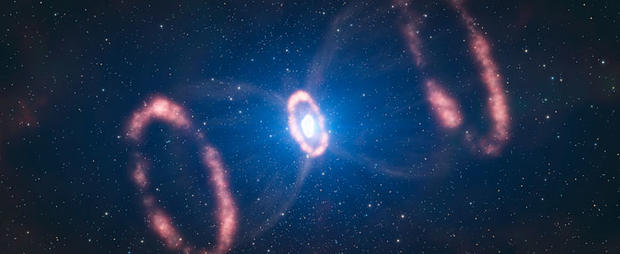Astrophysicists Get First-Ever 3-D Look at Supernova Explosion
Updated 6:35 ET Scientists got their first-ever look at a three-dimensional view of a supernova explosion. Astronomers at the European Southern Observatory reported the news, which they observed using the organization's "Very Large Telescope" (and yes, it's quite big.)
The cataclysmic event sent sent particles of gas and dust shooting into space at speeds up to 100 million kilometers per second.
The explosion also was annotated by something quite unexpected: Instead of being concentrated in one direction, the materials got flung in all over a place. Scientists believe that's a sign that the supernova likely was very turbulent, the explosions being stronger in some directions.
The supernova under observation, SN 1987A, was first noticed in 1987 and is the first supernova to be observed by the naked eye in the last 383 years. That relative proximity is what made it easier for astrophysicists to follow the explosion of a massive star and its aftermath.
There are many different theories about how stars explode. One model posits a build-up of small scale instabilities that eventually trigger a large scale explosion. It's a complicated theory but one analogy is to think about what happens when you amplify a vibration to a certain frequency that eventually sets off a bell.
"So the explosion was ringing like a bell at the beginning and then exploded off in one direction," according to Karina Kjaer, lead author of a research team reporting the finding.
Kjaer underscored that science still doesn't yet have a sufficient understanding of supernova explosions. In an email interview with CBSNews.com, she said that only a small number of supernovae are close enough for scientists to observe the shape and direction of the ejected materials.
"Of all of those SN 1987A is the only one in our time, in 1987 -the others are several hundred years old. For a decade scientists have thought this inner material to be ejected from the poles of the exploding star. Our observations revealed that the material actually was ejected from the equator of the star, and not even symmetrically at that," she said, adding that "given that there are so few nearby supernovae, it is very rare to learn this much about an explosion. Often SN 1987A is called the Rosetta stone of supernovae, it is the key to understanding them all." The full report will be published in the journal Astronomy and Astrophysics.
